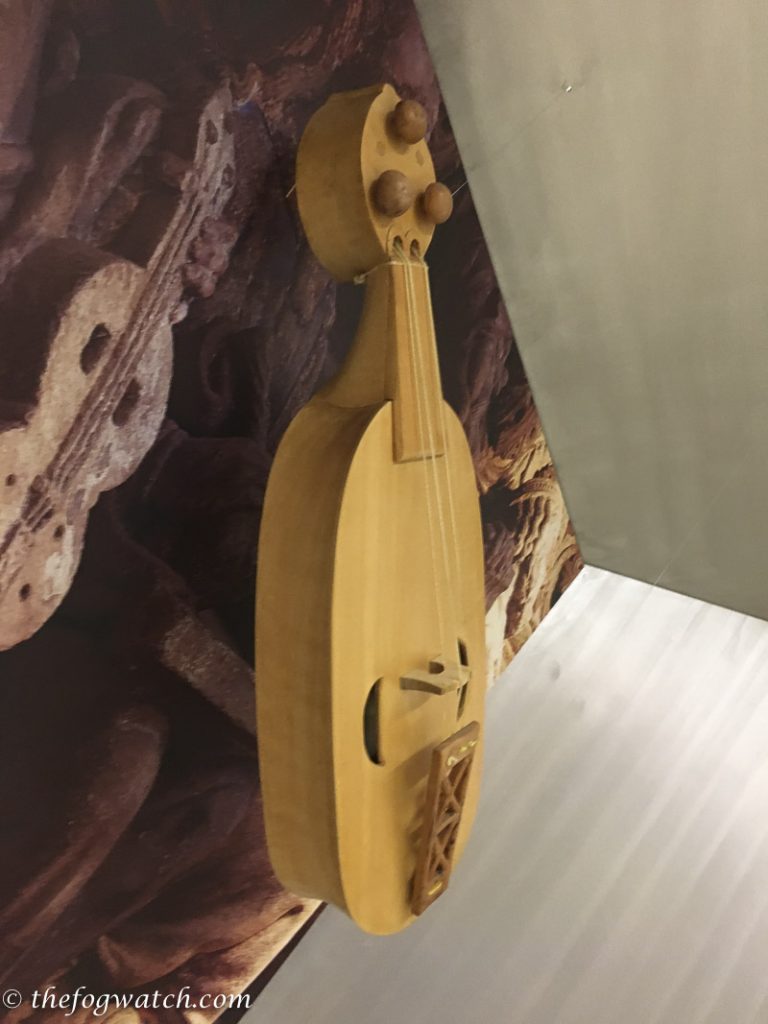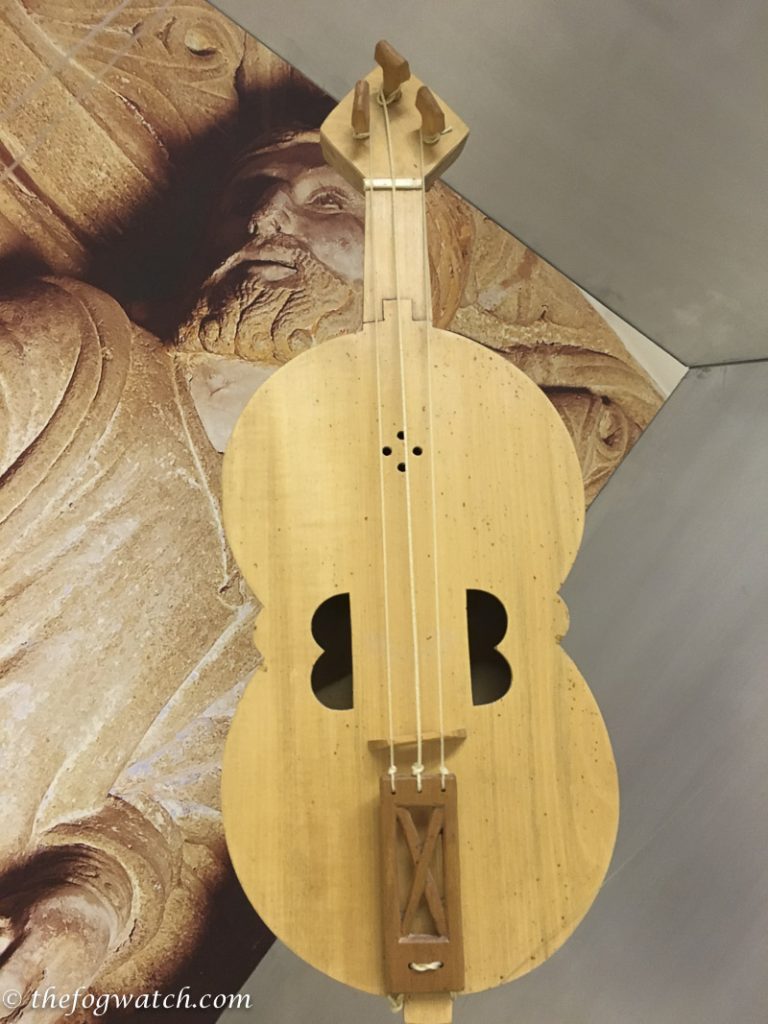Here is a Camino moment – one of those special encounters I had on the Camino. When I reached Santiago, I toured the Cathedral and was amazed by the carvings on the Portico of Glory – carved by Medieval French sculptor Master Matteo in the 11th century.

The Portico of Glory depicts, among other things, a large group of musicians, caught as though in the act of tuning up before performing. Some are in conversation with the person next to them, some are tuning-up, and as a result, it is a surprisingly relaxed and naturalistic carving. I could easily imagine a group of musicians chatting before the start of a gig.
The portico also depicts the instruments in some detail – the instruments are well observed and there’s enough information to enable reproductions of each of the instruments. When I visited the museum, I found some of the instruments on display, and was able to photograph them.
The instruments bring to life medieval Galician-Celtic music, as well as music from the Codex Calixtinus. And there is a group performing regularly with these reproduction instruments.
One of the most interesting is the Organistrum – a kind of medieval hurdy-gurdy. This is a keyed, 3-stringed instrument which is ‘bowed’ by turning a rosined wheel that bears against the strings. The instrument is constructed with a figure eight soundbox, and is played by two people, one to turn the handle for bowing; the other to operate the keys.
The sound-box is elaborately carved with stylised fleur de lys and dot motifs.
And the key box is designed so that as each key is lifted, it forms a chord across the three strings.
A rhythm can be established by alternately speeding and slowing the turn of the handle which turns the bow wheel. The instrument provides a steady chordal drone to fill out the music – just like a hurdy-gurdy.
The next instrument was a fidula obal – an oval-shaped fiddle – in many ways this instrument is the distant forebear of my pochette, or travel fiddle.
In this case, it has three strings secured by three tuning pins at the top of the neck and at the ornately carved tailpiece at the base. The strings run over a slightly curved bridge, enabling the bow to sound one, two or even all three strings.
My pochette fiddle, modelled on one I saw some years ago in London’s Victoria and Albert Museum, would not have seemed too out of place among the medieval instruments. Here is my instrument being played along with a couple of other instruments at a folk festival.
Which reminds me that I really must learn some Galician Celtic tunes 🙂
A further instrument is the Fidula Ocho – or figure eight fiddle. This one has a larger soundboard area, and a waist, not unlike a modern violin. So, this instrument could be viewed as one of the violin’s ancient ancestors. This fidula would probably have been louder than the Obal and was possibly a lead instrument carrying the melody.
All these instruments were accurately recreated from the 11th-century stonework of Master Matteo. The Foundation of Pedro Barrié de la Maza commissioned expert luthiers, art historians and musicologists to form a multidisciplinary team to produce the most faithful re-creations possible. There is a video in Spanish describing the process of bringing these instruments back to life.
As you can see from the video there were more instruments than I was able to photograph, such as the harp and bowed psaltery and a frame drum – still played in Galicia today, an instrument strongly resembling the Irish Bodhran.
The Organistrum was for me the most fascinating instrument, due to its mechanical complexity. It appeared to be a cross between a hurdy-gurdy and a Swedish Nyckelharpa. I must admit it is tempting to see if I could build at least one of the Fidula instruments!
Here is the Organistrum being played.
I could easily see how an ensemble of these instruments, along with voices would give a full and lively sound – especially with the acoustics of the Cathedral to add a little echo and ring to the music 🙂
****************************
If you’d like to read more about our Camino in 2016, here is the index page for all my Camino posts
or click on the link above 🙂
________________________________________
Why not have these posts delivered to your in-box? Just enter your email address and click the ‘subscribe’ button in the left margin, and don’t forget to respond to the confirmation email in your in-box 🙂







How wonderful, Jerry, that you played me a folk song for my breakfast. Oh, so lovely. Thank you. The museum is really extraordinary with its instruments. I like the music of the organistrum – a fantastic instrument. Do please greet dear Sharon and have a good time*
Thanks Anneliese – yes the museum was extraordinary and gave me a new appreciation for the sophistication of early medieval instrument makers. I often hear formal medieval music, and wonder if perhaps the rhythms and phrasing should have more of a feel from folk music – there is a real strength and vitality in the oral tradition of music. And in playing folk music I realise that there is a lot of interpretation in how the music is played. And yes, Sharon says ‘hello!’
That is so amazing and so interesting Gerry. You certainly received much from your Camino. No wonder you want to go again.
Thanks Margaret – yes it was an extraordinary journey – and yet I feel we only scratched the surface of what the Camino has to offer 🙂